When you are in pain, you need fast relief. But pain medicines have side effects that you may want to avoid, and now we are possibly facing shortages of drugs. One solution that I have found is using herbs for pain relief.
Most people are unaware of the pain-relieving qualities of herbs that are readily available across the United States. You probably have most of these growing near you.
With the knowledge of which herbs to use and how to use them, you have a free pharmacy growing nearby.
If you don’t have a readily available source for these herbs, consider asking friends and neighbors to share the seeds with you or join a seed swapping group online.
You will soon have a medicinal garden that can treat any kind of pain – and all for free.
The best herb to use for pain depends on the type of pain you are experiencing. So, I have grouped these herbs into categories accordingly. Notice that some herbs fall into multiple categories, so they may be more valuable to you, depending on your needs.
General Pain Relief
1. White Willow Bark
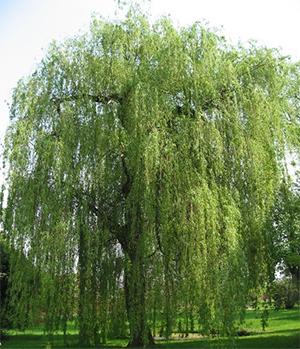
White willow bark is famous for its use as a natural remedy for pain and inflammation. It contains an aspirin-like compound called salicin that is effective in relieving the pain of most types.
It is especially useful for treating headaches, back pain, joint pain, arthritis, and muscle aches.
The bark of the white willow tree, its leaves, and the ash of burned logs are used medicinally. An easy way to relieve pain with white willow is to make a tea from the bark or the leaves.
White Willow Tea
To make 2 cups you need: 3 to 4 teaspoons crumbled white willow bark or dried leaves, 1 cinnamon stick, honey, as desired for flavor and 2 cups water.
- Boil the white willow bark for 5 to 10 minutes,
- Add the cinnamon, turn off the heat and cover the pot. Steep for 20 to 30 minutes.
- Strain the tea through a coffee filter or mesh strainer to remove the bark and cinnamon stick.
- Add honey, if desired.
- Drink up to 4 cups of tea as needed to relieve pain. Pain relief is long-lasting.
2. Wild Lettuce

Wild lettuce is often referred to as the opium of lettuce because it has weak opium-like effects. Used in small doses, it is a very effective pain reliever and a sedative. It does not cause the high associated with opium.
Wild lettuce tincture or tea is an excellent general painkiller for muscle pain, joint pain, and back pain.
Wild Lettuce Tincture
You’ll need vodka, brandy, rum or whiskey, 80 proof – or good quality apple cider vinegar and fresh or dried wild lettuce leaves.
- Fill a clean, sterile, glass jar with chopped fresh leaves or use 2 ounces of dried wild lettuce per cup of alcohol or vinegar.
- Cover the herbs with vodka or other drinkable alcohol or vinegar.
- Stir the herbs to remove air bubbles.
- Move the container to a cool, dark place and allow the tincture to steep for 2 to 4 weeks, shaking daily.
- Strain out the herbs and discard. Store in a cool, dark place for up to 5 years.
- Use 2 to 4 ml of tincture three times daily, as needed.
3. St. John’s Wort
Did you know that St. John’s Wort relieves painful joint symptoms and reduces the inflammation causing the pain? Best results are achieved by taking the herb daily.
Over time, inflammation calms, and the joints heal. It also treats muscle pain, back pain, and general body aches. Take St. John’s Wort internally or massage the oil into the muscles.
St. John’s Wort is known for its ability to relieve nerve pain and neuralgia when applied to the skin in the painful area. It treats sharp pains from neuralgia, sciatica, and shingles.
St. John’s Wort Tea
To prepare tea with St. John’s Wort, Place 1 teaspoon of the dried herb, or 1 tablespoon of fresh herb, into a cup of boiling water. Cover it and allow it to steep for 8 to 10 minutes.
Strain out the herb and add sugar, honey or lemon for flavor, as desired. Drink one to two cups of tea daily with a meal.
Related: How to Make Anti-Inflammatory Band-Aid Using Plantain
4. Yarrow Root
Yarrow contains salicylic acid, which acts quickly to relieve pain. Use yarrow leaf tea to relieve general aches and pains.
Salicylic acid is a form of the pain reliever found in aspirin.
Yarrow Tea
Add 1 teaspoon of crushed dried yarrow leaves to 1 cup of boiling water. Steep for 3 to 6 minutes.
Joint Pain, Arthritis, Osteoarthritis
5. Chicory
Chicory root is a traditional treatment for arthritis pain. It contains anti-inflammatory properties that reduce the pain caused by arthritis and osteoarthritic conditions.
Chicory root can also be used for muscle aches, pains, and joint soreness.
Chicory Roasted Root
Brew roasted chicory root and consume as you would coffee. Some people use a mixture of half coffee and half chicory root. For inflammatory conditions, add turmeric to the chicory for extra anti-inflammatory benefits.
Related: 79 Edible Flowers in North America (with Pictures)
6. Chickweed
Chickweed, taken as a tea or tincture, is an effective remedy for joint pain and arthritis pain. It also relieves the associated inflammation. Chickweed is also useful in a bath or soaking water for knee and foot pains.
Chickweed Tea
Make a traditional tea using 1 teaspoon of the dried herb or 1 tablespoon of fresh chopped chickweed. Pour 1 cup of boiling water over the leaves and cover it while it steeps for 10 to 15 minutes. Consume the entire cup for pain relief.
7. Cayenne for Achy Muscles and Joints
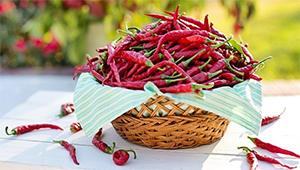
Capsaicin, an ingredient in many arthritis and muscle pain remedies, is derived from hot peppers like cayenne. Over time, capsaicin depletes a compound that transmits the pain sensation to the central nervous system.
Use cayenne in salves or oils to massage achy muscles and joints. The pepper also increases blood circulation to the area, warming it and relaxing the muscles.
A small amount regularly used over achy muscles, and painful joints will relieve pain and reduce inflammation. Maximum results are felt within a few days of regular use.
Cayenne Massage Oil for Painful Muscles and Joints
Cayenne oil contains capsaicin which causes a sensation of burning. Test your oil on a small patch of skin before applying generously. Dilute the oil, if necessary, with more oil until a comfortable burn is felt.
Other peppers can be used but will create a different degree of burn, so always test first. You’ll need: 2 tablespoons dried cayenne pepper and 1/2 cup coconut or olive oil.
- Heat the oil over low heat (approximately 100 F) for 10 days, stirring daily. I use a potpourri warmer pot for this.
- Let the oil settle overnight before carefully decanting the clear oil off the top leaving the pepper behind.
- For an Icy—Hot oil, add peppermint essential oil to the cayenne oil before use.
Related: Homemade Hot Pepper Cream for Arthritis & Joint Pain
8. Peppermint
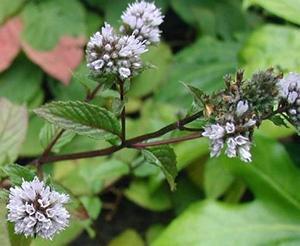
Muscle aches, joint pains, gout pain, and nerve pain are relieved with peppermint oil. Warm the peppermint leaves in a carrier oil to release the beneficial oils, then strain out the herb.
Massage the extracted peppermint oil into the sore muscles or on the skin above joint pains and nerve pain. It does not treat the underlying causes of the pain, but it does a quick job of relieving the pain.
Peppermint Tea
Ingredients: 7 to 10 fresh peppermint leaves or 1 teaspoon dried peppermint, 1 cup boiling water, and honey, milk, or lemon to taste.
- Crush the fresh peppermint leaves or crumble the dried herbs.
- Remove the boiling water from the heat and allow it to cool slightly. Pour the hot water over the tea leaves.
- Let the tea steep for 7 to 12 minutes. Add honey, lemon, or milk to your taste.
Related: Make Your Own Peppermint Oil The Best Insect Repellent
9. Feverfew

Feverfew leaves and flowering heads relieve the inflammation that causes arthritis pain. The herb reduces the associated pain when taken regularly. Take feverfew as a tea daily or take the ground leaves in capsule form.
For localized arthritis pain or muscle pain, a poultice made from crushed feverfew leaves placed over the affective area is sufficient. It relieves the pain and calms the inflammation over the joint.
Crush some feverfew leaves (soak them if dried leaves are used) and place them directly over the joint. Cover with a clean cloth to hold them in place.
10. Lavender for Muscle Pain, Backaches, and Arthritis Pain
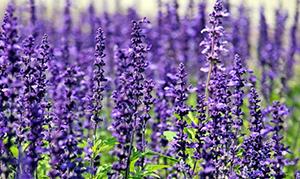
A lavender oil massage calms throbbing muscles, relieves arthritis pain, and helps heal sprained or strained muscles. It is also useful in relaxing the back muscles and relieving back pain. Lavender contains analgesic compounds that ease muscle pains and injuries.
Related: DIY SHTF Healing Salve
Lavender Oil
You’ll need 3/4 jar of dried lavender flowers, 1 jar of coconut oil, olive oil, or grapeseed oil.
Crumble the lavender or bruise it slightly. Place it in a clean jar with a tight-fitting lid. Place the lavender in a warm, sunny location for at least 48 hours, but preferably three to six weeks.
If you need oil faster, heat it gently in a double boiler or crockpot for 2 to 5 hours at a low temperature (100 F to 120 F). Strain out the lavender and store the oil in a cool, dark place.
Other Treatments for Muscle Pain and Nerve Pain: Ginseng for fibromyalgia pain and Valerian root soothes muscle spasms and cramps.
Other Treatments: Joint Pain, Arthritis, Osteoarthritis: Lemon Verbena, Prickly Pear, Unicorn Root, Wild Strawberries, Slippery Elm, White Pine and Feverfew.
Stomach Pain, Digestive Pain, and Muscle Pain
11. Aloe Vera
Aloe vera, taken with meals, reduces gastroesophageal reflux and the associated heartburn pain. It also reduces stomach and intestinal cramping and abdominal pain.
Aloe Vera Gel
Aloe vera gel is the gelatinous substance inside the aloe vera leaf. To use it, cut open a leaf and scoop out the gel inside. Eat 2 tablespoons of the gel in the morning on an empty stomach and before meals.
If desired, the gel can be blended with water for easy consumption.
12. Chamomile for Muscle Pain and Digestive Pain
 You’ve probably had a cup of chamomile tea at some point, but did you know it is useful for treating digestive pain and muscle soreness? Chamomile tea relaxes the muscles, which relieves the pain. It soothes muscle and body aches.
You’ve probably had a cup of chamomile tea at some point, but did you know it is useful for treating digestive pain and muscle soreness? Chamomile tea relaxes the muscles, which relieves the pain. It soothes muscle and body aches.
Relaxing the digestive muscles treats abdominal pain, indigestion, and gastritis. People with Crohn’s disease and irritable bowel syndrome may find that chamomile tea, taken 3 to 4 times daily, relieves the majority of their symptoms.
Related: 9 Natural Remedies To Heal Wounds Faster
Chamomile Tea
Ingredients: 2 Tablespoons fresh Chamomile flowers, 2 cups hot water and honey, as desired.
- Rinse the flowers in cool water
- Heat 2 cups water to boiling and take off the heat. Cool slightly.
- Add the chamomile flowers, cover, and steep for 3 to 5 minutes.
- Strain the tea into 2 servings and sweeten with honey, as desired.
13. Dill Leaf
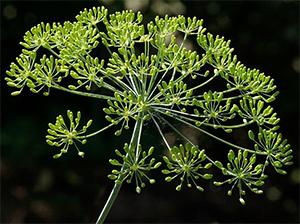
Dill Leaf Tea relieves muscle spasms and cramping, including digestive tract pain. Dill leaf tea gives immediate relief for the pain, but it does not treat the underlying illness. Dill seed infusion or dill tincture is also useful.
Dill Leaf Tea
You’ll need: 1 to 2 teaspoon dried dill leaf and seeds, crushed and 1 cup boiling water. Pour boiling water over the herbs and allow to steep for 10 to 20 minutes. Drink 1 cup of tea after the last meal of the day.
Unsweetened tea is best for stomach problems, but honey or stevia can be added for heartburn or nausea.
Other Treatments for Abdominal Pain: Fennel, Leeks, Lemon verbena, Thyme, Bearberry, Bloodroot, Black cohosh, Kudzu, Bayberry, Black walnut, Chives and American Basswood tree.
Headaches
14. Feverfew
Feverfew is a remarkable preventative and treatment for migraine headaches. Taking it daily reduces the frequency and intensity of migraine headaches. For the best results, take feverfew daily.
Chew 1 to 4 leaves or drink a cup of feverfew tea to an effective headache preventative.
Feverfew Tea
Ingredients: 1 teaspoon fresh feverfew leaves, torn or chopped into small pieces and 1 cup boiling water. Pour boiling water over feverfew leaves and steep for 5 minutes. Filter out the herbs and enjoy warm.
Other Herbs for Headaches and Migraines: Sweet marjoram, Bottle gourd, Wintergreen, Yellow jessamine, Sassafras, Quaking aspen, White willow, California buckwheat, Watercress, Duckweed, Peppermint and Yarrow.
Related: How to Treat Migraines with an Herbal Tincture
Tooth Pain
15. Clove Oil is Numbing for Skin and Nerve Pain
While clove oil will cost you a few dollars, it is a remarkable pain reliever. It works by numbing the area, which stops the pain. Dilute the oil before using it; it is too strong in its natural form.
You can also use clove oil to prevent any kind of pain from skin irritations, cold sores, stings, and bites. The pain relief lasts for hours, and you can reapply it as needed.
15. Yarrow
Chewing a piece of fresh yarrow root or yarrow leaves reduces pain and inflammation for tooth and other dental pains.
This is a brief summary of the herbs that can be used to treat pain. There are many more, and I’m sure that you will be able to find herbs in every category growing near you. Collect them from clean sources, away from roads, and heavily traveled areas.
If you live in a highly-populated area, you can collect the seeds from roadside plants and grow them in pots or in your herb garden.
You should do your own research on these herbs before using them. Some have warnings for susceptible people, so it is always wise to analyze them for your individual condition.
You may also like:
 DIY Wilderness Soap And Shampoo From This Plant
DIY Wilderness Soap And Shampoo From This Plant
10 Things Cowboys Carried With Them in the Wild West to Survive (Video)
How to Make a Natural Remedy for Food Poisoning
40 Bizarre Home Remedies Our Grandparents Taught Us That Actually Work

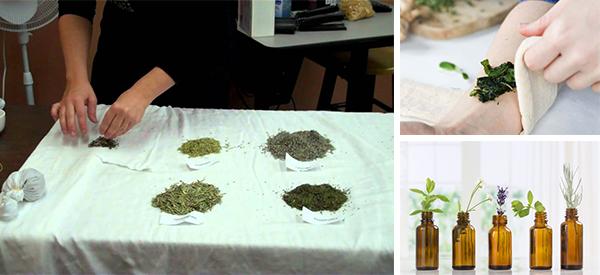
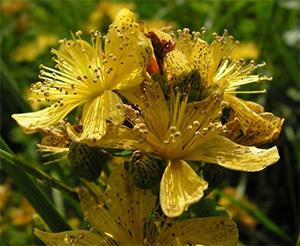
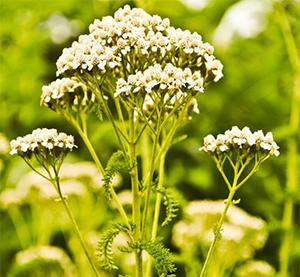
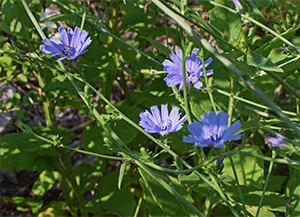
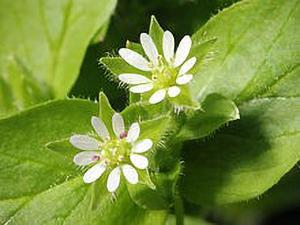
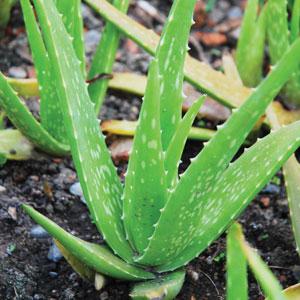
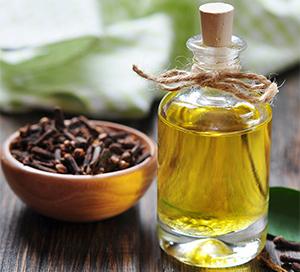













Thanks for the very conclusive information. Have heard of some of the information, however learned new info too. I’m very appreciative!
Please be careful with anything that has salicylic acid. Especially if you are on blood thinners. Always check with your health care provider before using herbal or other medications or supplements. When I worked in the emergency room, we almost lost a guy who was chewing willow bark while also taking coumadin.
Like your posts, but like if you give the Latin names as well. Some varieties of the mentioned plans do not work. Another thing is St. John’s Wort should not be used by persons with epilepsy.
No Kratom? this is the only real painkiller that should be on the list yet it’s nowhere to be found..
Kratom is also addictive. Working in a drug rehab center, we are treating people detoxing from Kratom as if they’re withdrawing from Heroin.
What is good for someone with asthma?
Old days, asthmatics went to the pharmacist and he rolled cigarettes with peppermint in them. this is real peppermint oil and leaves, not imitation as used in modern menthol.
Korean acupressure in another in my arsenal. Muscles under the collarbone and under the shoulder blades will knot and cause an attack. I work them loose, but be gentle as possible.
Next is allergy tabs. Most attacks are an allergic reaction. Last, but very good is peppermint snuff. I mix mine with scotch snuff (powdered tobacco) because it forces mucus to the front of the sinuses and not trying to run down the back. When that happens, it caused a bad attack, closes up the throat, and I’ve passed out for lack of air.
https://www.healthxchange.sg/asthma/complications-management/survive-asthma-without-inhaler is good information. /// https://www.healthline.com/health/severe-asthma/herbs-for-severe-asthma /// https://www.medicalnewstoday.com/articles/home-remedies-for-asthma
Peppermint plants are cheap and even in Arizona they can thrive as long as they get plenty of water and summer shade. niio
It’s important to note ONLY aloe vera (yellow flowers) is known to be eatable. All others are suspect. The skin and latex will cause diarrhea and can cause kidney stones. https://www.healthline.com/nutrition/can-you-eat-aloe-vera#leaves The latex is a yellow liquid used to kill lice, fleas and so on.
Red willow bark is more powerful.
Simple Korean acupressure controls most pain, as will use of self-hypnosis.
Chicory coffee is good. It’s not expensive (a heaping tablespoon makes a pot of coffee), and tastes good.
Peppermint, good stuff. For asthma attacks, we smoke it. This is where menthol cigarettes came from.
Lavender is in bloom now.
Use dill in cooking, like for fish or pickles. Use cider vinegar and the pickles are a health food.
Don’t care for chicory coffee, Yaupon tea is better and also has caffeine. Imagine the Cargadores 1000 years ago on the roads from the Southwest with their loads of dried Yaupon leaves bound for Cahokia…
Like your opinion on the uses of prickly poppy, some say it is a good sedative (leaf) tea, or a pain relieving salve, or that you can get high smoking it, or dead just as easily and it can damage hearing like hydrocodone.
Yaupon doesn’t grow here, but is a wetlands plant. It was the black drink used to cleanse the system–AKA vomitoria–before going on a spirit journey.
Chicory needs to be mixed with coffee here. For us, caffeine is a sedative 🙂 One good cup and we all sleep like babies. For a sedative, lavender is a good one. My stepson and -daughter said doctors in the military took them off adderall because it made them sleepy! 🙂 It was being handed out to people in war zones to make them hyper alert. When little, the folks would play battle scene recordings to make us take naps. niio
You need to include calendula officinalis, the pot marigold The tincture is one of the best for wounds,
During the Civil War, battlefield doctors on both sides begged housewives to raise it. Even under filthy conditions wounds packed with petals never festered. Current price was $16/lb two years ago. Whole dried flowers are half that. One stepdaughter, an herbalist, makes a cream with heavy cream and the petals. It has to ferment but she said it doubles the effect. niio
I noticed comfrey wasn’t mentioned, that’s a shame.
Thank you for sharing is very valuable information arbes are the natural healing of the body! medication do more harm it helps in one way and damage lot of ways and you have so much side effect with it